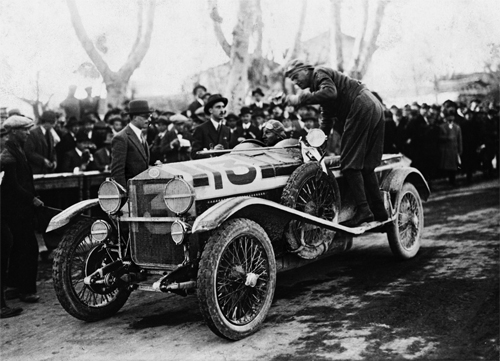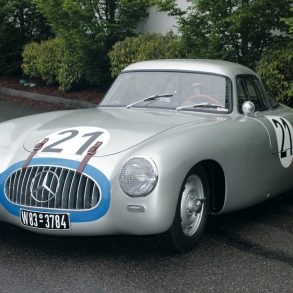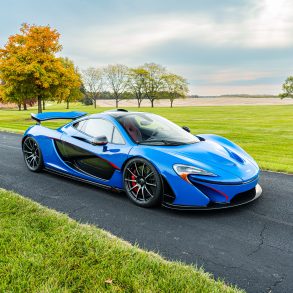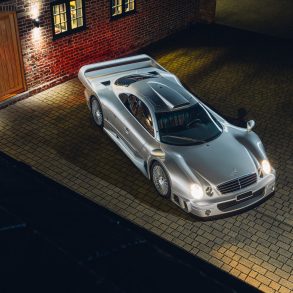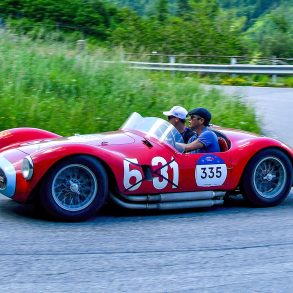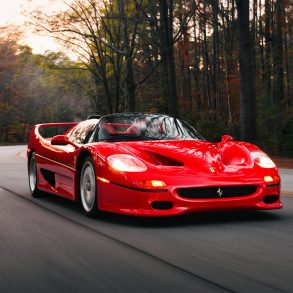The 1927 Mille Miglia Race
Results: 1927 Mille Miglia Results / Dates: March 26-27, 1927 / Winner: Minoia – Morandi / Winning Speed: 48.27 mph / Starters: 77 / Finishers: 54
And then they came, from all over Italy, young men most with more horsepower than talent many the sons of well to do families. Weeks before the race the roads were filled with cars from dawn to dusk whereupon the drivers would retire to the cafes surrounding the Piazza della Vittoria which would go down in history as the stage upon which the cars would be scrutineered. Over vino and polenta e oséi the race was won and lost many times over. Each claiming in their turn that they knew the secret to victory. The major questions on everyone’s mind included how long would the race take and was it better to build for reliability with a reinforced car or was a light weight car built for all out speed the answer. There was even a question on how long the race would take with more than a few teams packing overnight bags. For this first race they would all be driving into the great unknown.
After much anticipation, March 26th finally arrived. Spectator safety was a major concern for the organizers and contemporary accounts suggest that 25 000 or more soldiers lined the route to control the onlookers. Race rules obliged the competitors to observe conventional traffic regulations throughout. There were seventy-seven entries for the race. The most unusual was an entry by one Frate Ignoto (Unknown Monk) who was actually Arturo Mercanti the Brescian who helped found the Monza Autodrome and who would not soon be forgiven, Italy being a country of long memories. The leading manufacturers were Alfa Romeo, Fiat, local manufacturer Officine Meccaniche (O.M.) and Lancia. There were 14 controls located along the circuit and for the inaugural race it was decided that the largest cars would start first and the largest of them all was the 8-liter Isotta Fraschini driven by no less than Aymo Maggi and co-driven by Bindo Maserati, one of the famous Maserati brothers. Foreign participation amounted to no more than three small Peugeots in class H (up to 750cc).
At 8:00 in the morning history was written and the legend of the thousand miles had begun. The first stage to Bologna saw the Alfa Romeo of Brilli-Peri in the lead being chased by around 76 combatants. One of the best drivers of his day, Brilli-Peri the hunted animal continued to hold the others at bay. Into the Apennines they climbed the Raticosa and Futa passes in a cloud of dirt and sharp rocks. Now through Rome and on the return leg the Alfa continued to lead the two O.M.s and another Alfa. The old saying of who that leads at Rome will not win the race was also born that day when Brilli-Peri’s day came to an end at Spoleto after his oil pipe had vibrated loose which soon led to fatal engine damage. The O.M. of Minoia and Morandi led a sister car of Danieli and Balestreo up the Adriatic coast. With darkness falling enterprising spectators lit torches to help the drives on their way. The third place Alfa of Marinoni and Ramponi failed at the 20-hour mark and thus scored O.M. their 1-2-3 in the inaugural Mille Miglia. Both Minoia and Morandi were local racers with the latter competing in the Mille Miglia for another twenty years.
This only added to the celebrations that would take place in Brescia in the days to come. Two of Lancia’s Lambdas came in 4-5, followed by the Isotta Fraschini of Conte Maggi in 6th and the Frate Ignoto in 7th. 54 of the 77 cars that left Brescia returned the next day and the race was a rousing success. The winning car averaged 47.9 mph while the 1,100 c.c. class winning 8 h.p. Fiat maintained a brisk 41.5 mph over the thousand-mile course. O.M. were quick to cash in on their new fame embarking on a road trip all over Italy where they presented the cars and their winning driver to adoring fans all over Italy. Virtually unnoticed in all of the hoopla was a young Mantuan motorcycle racer who scored a 5th place in the 3000 c.c. class driving a Bianchi. His focus turning more and more to four wheels Tazio Nuvolari promised himself that they would all know his name soon enough.
1927 Route

1927 Results

- Results: 1927 Mille Miglia Results
- Dates: March 26-27, 1927
- Winner: Fernando Minoia
- Winning Speed: 48.27 mph
- Starters: 77
- Finishers: 54
| Result | Driver | Team | Time |
| 1 | Minoia – Morandi | OM | 21h 04m 48s |
| 2 | Danieli T. – Balestrero | OM | 21h 20m 53s |
| 3 | Danieli M. – Rosa | OM | 21h 28m 02s |
| 4 | Strazza – Varallo | Lancia Lambda | 21h 42m 48s |
| 5 | Pugno – Bergia | Lancia Lambda | 21h 55m 14s |
| 6 | Maggi – Maserati B. | Isotta Fraschini | 22h 00m 35s |


